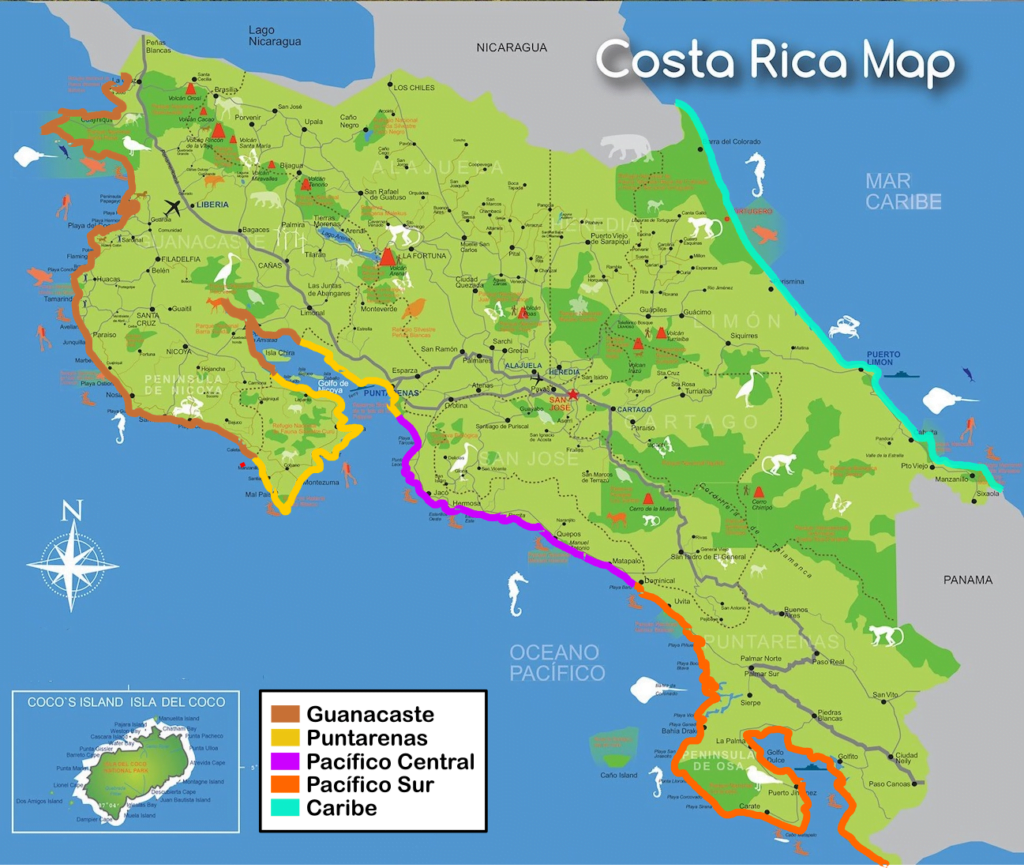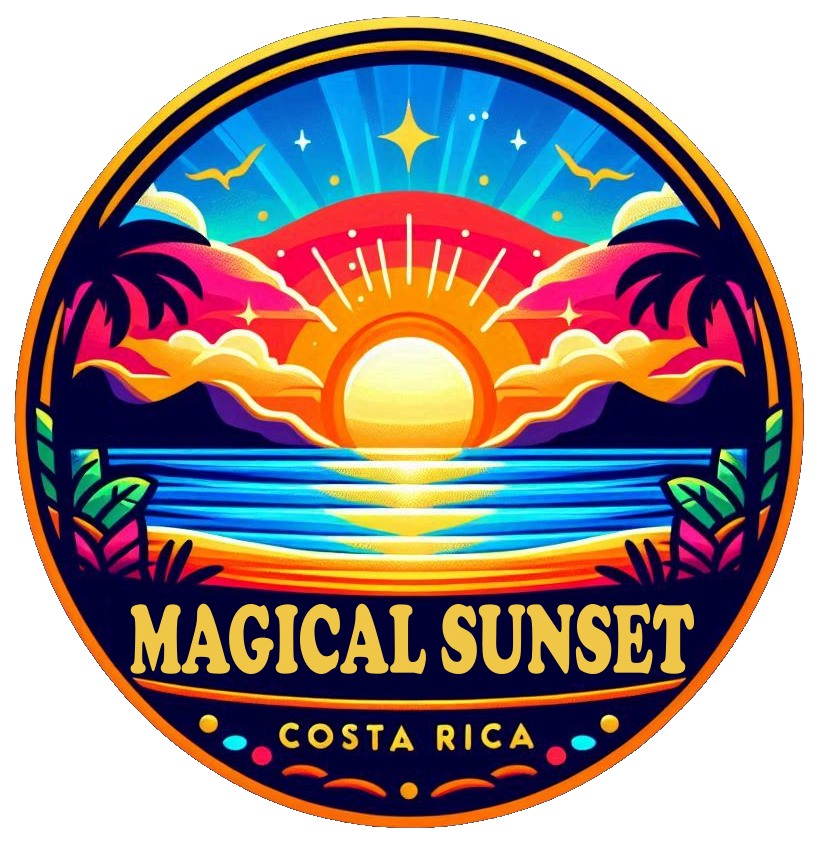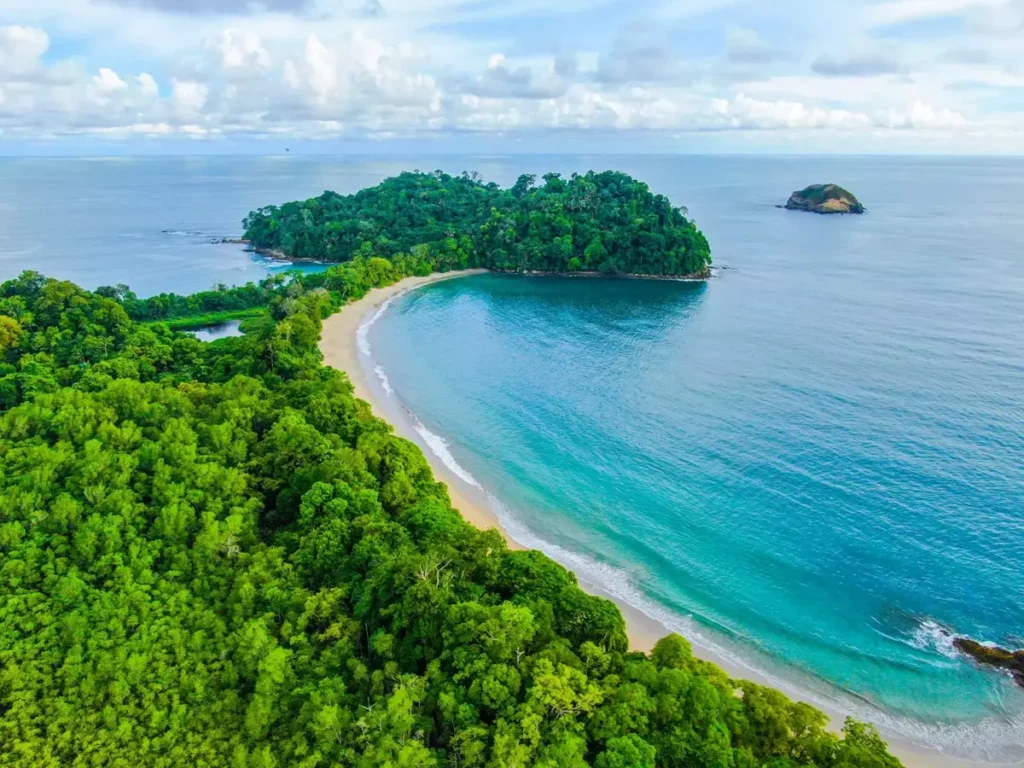Beaches of Costa Rica’s Central Pacific Coast
Costa Rica’s Central Pacific region is a true paradise for lovers of sun, sand, and sea. This coastal area, stretching from Puntarenas to Quepos, is famous for its spectacular beaches, impressive biodiversity, and relaxed atmosphere. From hidden beaches to popular tourist destinations, here you’ll find a complete guide to plan your next escape to this tropical corner.
This coastal strip primarily belongs to the province of Puntarenas, although some destinations extend toward the province of Alajuela. The region includes several cantons and districts, each with its own unique beaches and attractions.

Tabla de Contenido
- 1 Beaches in Costa Rica’s Central Pacific Coast
- 2 History and Interesting Facts About Costa Rica’s Central Pacific Coast
- 3 How to Get to the Central Pacific Coast
- 4 Tourist Services in the Central Pacific Coast
- 5 Activities and Attractions in the Central Pacific Coast
- 6 Tips and Recommendations for Visiting Costa Rica’s Central Pacific Coast
- 7 Additional Information About the Central Pacific Coast
- 8 Frequently Asked Questions About the Central Pacific Coast
Beaches in Costa Rica’s Central Pacific Coast
- Palo Seco Beach
- Bejuco Beach Parrita
- Esterillos Beach
- Biesanz Beach
- Manuel Antonio Beach
- Herradura Beach
- Jaco Beach
- Espadilla Norte Beach
- Matapalo beach
- Espadilla Sur Beach
- Coco beach
History and Interesting Facts About Costa Rica’s Central Pacific Coast
The Central Pacific region has played a key role in Costa Rican history due to its strategic location and access to the Pacific Ocean. Puntarenas, known as the “Pearl of the Pacific,” has been an important port since the 19th century, facilitating trade and communication with other countries. This region is also rich in culture and traditions, featuring local festivals, markets, and a cuisine that reflects the diversity of its people.
How to Get to the Central Pacific Coast
From San José
- By car: Take Route 27 from San José to Puntarenas, then continue on Route 34 towards Jacó and Quepos.
- By bus: Several bus companies offer regular services from San José to Puntarenas, Jacó, and Quepos.
- By plane: Domestic flights are available from Juan Santamaría International Airport to Quepos Airport.
From Liberia
- By car: Take Route 1 towards Puntarenas, then continue south on Route 34.
- By bus: Bus services are available from Liberia to Puntarenas and other locations along the Central Pacific.
Tourist Services in the Central Pacific Coast
Accommodations
The Central Pacific region offers a wide range of accommodations, from luxury resorts to cozy hostels. Some highly recommended places include:
- Los Sueños Marriott Ocean & Golf Resort (Playa Herradura)
- Hotel Club Del Mar (Jacó)
- Hotel Si Como No (Manuel Antonio)
Restaurants and Bars
The culinary options in the Central Pacific are diverse and delicious. You can enjoy fresh seafood, international cuisine, and traditional Costa Rican dishes at places like:
- El Pelicano (Puntarenas)
- Tacobar (Jacó)
- Cafe Milagro (Manuel Antonio)
Camping Areas
For nature lovers, there are several designated camping areas:
- Camping El Chaman (Jacó)
- Camping Manuel Antonio (near Manuel Antonio National Park)
Parking and Facilities
Most beaches and national parks in the Central Pacific offer parking and basic services like bathrooms and showers. It’s recommended to carry cash for parking fees.
Activities and Attractions in the Central Pacific Coast
Water Activities
- Surfing: Jacó and Playa Hermosa are world-renowned surfing destinations.
- Snorkeling and Diving: The crystal-clear waters of Manuel Antonio and Herradura are perfect for exploring marine life.
- Sport Fishing: Quepos is known as an excellent spot for marlin and sailfish fishing.
Land Activities
- Hiking: Explore the trails of Carara National Park and Manuel Antonio National Park.
- Cycling: Enjoy scenic routes along the coast.
- Horseback Riding: Offered at various beaches and natural reserves.
Tours and Excursions
- Canopy Tours: Experience the adrenaline of ziplining in Jacó and Manuel Antonio.
- Island Excursions: Visit Isla Tortuga or Isla Damas for a peaceful getaway.
Events and Festivities
- Puntarenas Carnival: A vibrant celebration that takes place in February.
- Independence Day Festivities: Celebrated throughout the country in September with parades and cultural events.
Tips and Recommendations for Visiting Costa Rica’s Central Pacific Coast
Best Time to Visit
The dry season, from December to April, is ideal for enjoying the beaches and outdoor activities. However, the green season (May to November) also has its charm, with lush landscapes and fewer tourists.
Precautions and Safety
- Ocean Currents: Be informed about ocean conditions and respect warning signs.
- Dangerous Wildlife: Although rare, it’s possible to encounter jellyfish and crocodiles in some areas. Stay cautious and follow local advice.
Local Tips
- What to Bring: Sunscreen, insect repellent, and drinking water.
- What to Avoid: Leaving valuables unattended on the beach.
Additional Information About the Central Pacific Coast
Useful Links
- Visit Costa Rica – Central Pacific
- Chamber of Tourism and Sustainable Commerce of the Central Pacific
Contacts and Emergencies
- Tourist Police: 911
- Quepos Hospital: +506 2777 0930
The beaches of Costa Rica’s Central Pacific Coast offer a unique combination of natural beauty, exciting activities, and a relaxed atmosphere. From perfect surfing waves in Jacó to the crystal-clear waters of Manuel Antonio, there’s something for every type of traveler. I invite you to explore this incredible region and discover for yourself why it’s one of Costa Rica’s most beloved destinations.
Frequently Asked Questions About the Central Pacific Coast
Which is the best beach for surfing in the Central Pacific?
Playa Jacó and Playa Hermosa are known for their excellent waves and ideal surfing conditions.
Is it safe to swim at Central Pacific beaches?
Yes, most beaches are safe for swimming, but it’s important to always respect warning signs and be aware of ocean currents.
What activities can you do in Manuel Antonio?
In Manuel Antonio, you can snorkel, dive, hike in the national park, and enjoy its white sandy beaches.
What are the best months to visit the Central Pacific?
The best time to visit is during the dry season, from December to April, when the weather is sunnier and drier.
Are there budget-friendly accommodation options in Jacó?
Yes, Jacó offers a variety of accommodations ranging from budget hostels to luxury hotels. Popular hostels include Hostel de Haan and Room2Board.
How can I get to the Central Pacific beaches from San José?
You can drive by taking Route 27 to Puntarenas and then follow Route 34 to Jacó and Quepos. There are also bus services and domestic flights from Juan Santamaría International Airport to Quepos.
What are the best beaches to visit with family?
Playa Manuel Antonio and Playa Herradura are excellent family-friendly options due to their calm waters and many tourist services.
What local food options are available in Puntarenas?
In Puntarenas, you can enjoy typical dishes like ceviche, casado (a traditional dish with rice, beans, plantains, salad, and a choice of meat), and the popular “churchill,” a drink made with shaved ice, kola syrup, condensed milk, and ice cream.
Is there nightlife in the Central Pacific region?
Yes, Jacó is known for its vibrant nightlife with bars, clubs, and casinos. There are also nightlife options in Manuel Antonio and Quepos.
Can you camp on the Central Pacific beaches?
Yes, there are designated camping areas on several beaches. It’s important to check local regulations and obtain the necessary permits.











